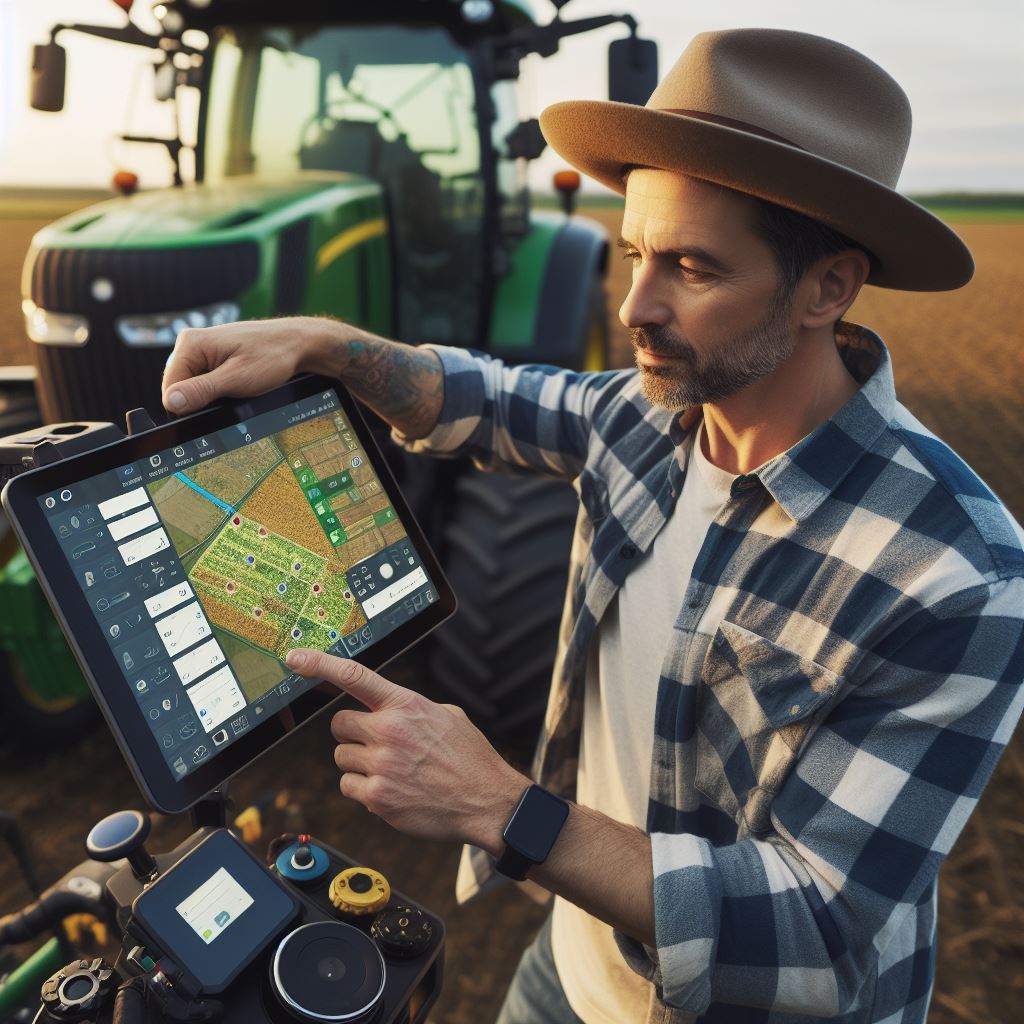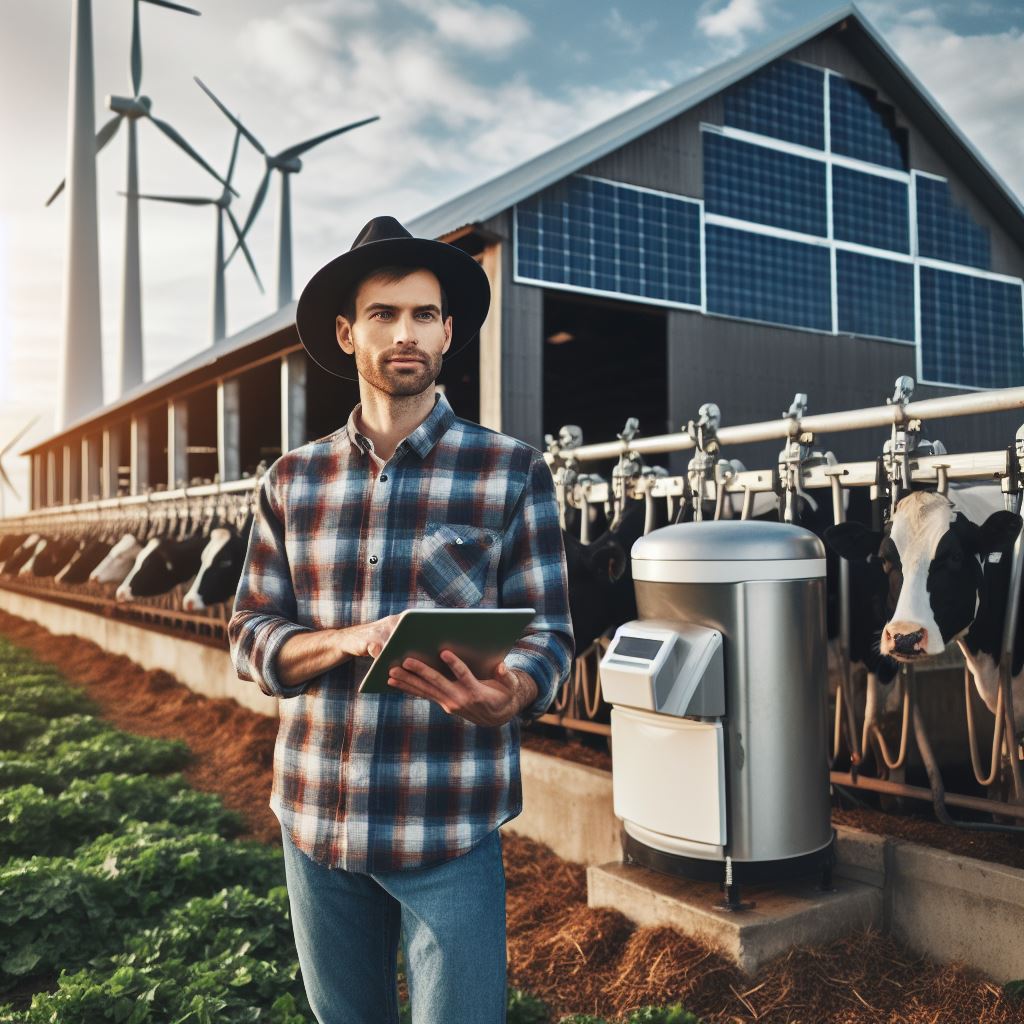Introduction
Exploring “Climate Smart Agriculture Tools and Techniques” enables farmers to optimize resource use.
In modern agriculture, the concept of climate-smart agriculture is gaining prominence. It emphasizes practices that promote sustainability and resilience.
Climate-smart agriculture aims to adapt to changing climatic conditions while minimizing environmental impact. It integrates innovative tools and techniques.
These tools and techniques play a crucial role in addressing climate-related challenges.
Implementing climate-smart practices requires a combination of traditional knowledge and cutting-edge technology.
Tools like precision irrigation systems, weather forecasting apps, and soil sensors aid in decision-making.
Techniques such as crop diversification, agroforestry, and conservation tillage enhance resilience and productivity.
By harnessing these tools and techniques, farmers can mitigate risks associated with climate change.
They can optimize yields, conserve resources, and reduce greenhouse gas emissions.
Moreover, adopting climate-smart agriculture contributes to sustainable food production and environmental stewardship.
In this blog post, we will delve into various tools and techniques used in climate-smart agriculture.
We’ll explore their benefits, challenges, and real-world applications.
Join us on this journey to discover how farmers are embracing innovation to build a more resilient future.
Benefits of Climate-Smart Agriculture
Improved resilience to climate change
- Climate-smart agriculture practices help farmers adapt to changing weather patterns.
- These practices include soil conservation, water management, and crop diversification.
- By implementing these techniques, farmers can better withstand extreme weather events like droughts and floods.
- Enhanced resilience allows farmers to continue producing food even in challenging climatic conditions.
- Climate-smart agriculture also minimizes the risks of crop failure, ensuring food security for communities
Reduced greenhouse gas emissions
- Traditional agricultural practices contribute to greenhouse gas emissions.
- Climate-smart agriculture methods focus on reducing these emissions through sustainable farming techniques.
- Using precision farming, farmers can optimize the use of fertilizers and pesticides, minimizing their environmental impact.
- Integrated pest management practices reduce the need for chemical pesticides, reducing emissions.
- Additionally, adopting agroforestry systems helps sequester carbon dioxide, mitigating climate change.
Enhanced productivity and crop yields
- Climate-smart agriculture techniques aim to increase productivity and crop yields sustainably.
- Conservation agriculture methods, such as minimum tillage and crop rotation, promote healthy soils and enhance productivity.
- Using climate-resilient crop varieties improves the adaptability and productivity of crops.
- Precision irrigation systems ensure crops receive adequate water, optimizing their growth and productivity.
- By increasing productivity and crop yields, climate-smart agriculture contributes to food security and economic growth.
Increased resource efficiency
- Climate-smart agriculture emphasizes the efficient use of resources to reduce waste and maximize productivity.
- Precision agriculture technologies enable farmers to use fertilizers and water more efficiently.
- Water-smart irrigation systems minimize water wastage and address water scarcity.
- Integrated farming systems allow for better nutrient cycling and waste management, reducing resource depletion.
- Improved resource efficiency not only benefits farmers economically but also reduces environmental impact.
In short, climate-smart agriculture offers numerous benefits for farmers, communities, and the environment.
By improving resilience to climate change, reducing greenhouse gas emissions, enhancing productivity and crop yields, and increasing resource efficiency, this approach ensures sustainable food production.
Transform Your Agribusiness
Unlock your farm's potential with expert advice tailored to your needs. Get actionable steps that drive real results.
Get StartedImplementing climate-smart agriculture practices is crucial to overcoming the challenges posed by climate change and building a resilient and sustainable agricultural sector.
Read: Automated Shepherding: The New Age
Tools for Climate-Smart Agriculture
In this section, we will explore the tools and techniques that are vital for implementing Climate-Smart Agriculture.
These tools play a crucial role in making informed decisions and conserving resources in the face of climate change.
Weather forecasting technologies
- The role of weather data in making informed decisions: Weather data is essential for making informed decisions in agriculture. It helps farmers anticipate potential risks and plan accordingly.
- Modern weather forecasting tools and apps: Modern weather forecasting tools and apps, such as satellite imagery and computer models, provide accurate and up-to-date information.
Precision agriculture technologies
- The use of sensors and drones in precision farming: Sensors and drones are revolutionizing precision farming by providing real-time data on soil composition, crop health, and pest infestations.
- The benefits of precision agriculture in conserving resources: Precision agriculture has numerous benefits, including optimizing resource allocation, reducing chemical usage, and increasing crop yields.
Innovative irrigation techniques
- The importance of efficient water management: Efficient water management is crucial in agriculture, especially in water-scarce regions. It helps minimize water wastage and maintain sustainable water supplies.
- Modern irrigation systems like drip irrigation and precision sprinklers: Modern irrigation like drip systems delivers water precisely to plant roots, minimizing runoff and evaporation
Overall, these tools and techniques contribute to making agriculture more climate-smart by increasing productivity, reducing environmental impacts, and ensuring sustainable resource use.
Implementing weather forecasting technologies, precision agriculture, and innovative irrigation techniques empowers farmers to adapt to climate change challenges and mitigate its adverse effects.
By embracing these tools and incorporating them into their agricultural practices, farmers can transition towards a more sustainable and resilient future.
Governments, agricultural organizations, and researchers must continue to invest in research and development of such tools, ensuring their accessibility and affordability to all farmers.
Climate-smart agriculture is the key to feeding a growing population while mitigating climate change, and these tools are instrumental in achieving that goal.
Read: Crop Monitoring: Tech for Better Yield

Uncover the Details: Agri Robots: The Pros and Cons
Techniques for Climate-Smart Agriculture
Conservation Agriculture
Conservation agriculture is an essential approach to ensure sustainable and climate-smart farming practices.
Its principles focus on protecting soil health and productivity, while also reducing negative environmental impacts.
By adopting these principles, farmers can enhance productivity, mitigate climatic risks, and promote long-term sustainability.
The principles of conservation agriculture
One of the key principles of conservation agriculture is minimal tillage.
This technique minimizes soil disturbance by reducing the number of times the soil is plowed or tilled.
By doing so, farmers can preserve the soil’s structure, organic matter content, and biodiversity.
Minimal tillage also helps to minimize soil erosion and improve water infiltration, ultimately leading to better moisture retention in the soil.
Methods for conservation Agriculture
Crop rotation is another important method used in conservation agriculture.
It involves the systematic practice of growing different types of crops in sequential seasons on the same piece of land.
Crop rotation helps break pest and disease cycles, reduces soil erosion, and improves soil fertility.
It also allows farmers to diversify their income streams and reduce economic risks associated with crop failure.
Cover cropping is another technique embraced by conservation agriculture.
It involves planting cover crops, such as legumes or grasses, to cover the soil between cash crops.
Showcase Your Farming Business
Publish your professional farming services profile on our blog for a one-time fee of $200 and reach a dedicated audience of farmers and agribusiness owners.
Publish Your ProfileCover crops offer several benefits, including weed suppression, erosion control, and nutrient recycling.
They improve soil health by increasing organic matter content, enriching soil fertility, and enhancing water retention capacity.
Agroforestry
Agroforestry is a sustainable land-use system that combines trees and agriculture, bringing together the benefits of both.
Integrating trees into farming systems provides numerous advantages, including enhanced climate resilience and biodiversity conservation.
Agroforestry practices contribute to climate-smart agriculture by reducing greenhouse gas emissions and adapting to change.
The integration of trees into farming systems
The integration of trees provides several benefits to farming systems.
Trees act as windbreaks, reducing crop damage caused by strong winds, and preventing soil erosion.
They also provide shade and moisture regulation, improving microclimates for crops and livestock.
Furthermore, trees promote increased water infiltration, reducing the risk of water runoff and soil erosion.
Benefits of agroforestry for climate resilience and biodiversity
Agroforestry systems enhance biodiversity by creating habitats for various species, including birds, insects, and beneficial microorganisms.
This biodiversity helps to control pests and diseases naturally, reducing the need for chemical interventions.
Additionally, agroforestry systems increase the availability of plant and animal products, providing farmers with multiple income sources.
Integrated Pest Management
Importance of reducing pesticide use
Reducing pesticide use is crucial for sustainable and climate-smart agriculture due to the negative impacts of pesticides on the environment and human health.
Integrated pest management (IPM) offers an alternative approach that focuses on minimizing pest populations using biological control methods.
The importance of reducing pesticide use lies in preserving ecosystem balance and preventing the development of pesticide-resistant pests.
Pesticides can harm non-target organisms, including beneficial insects like pollinators.
By reducing pesticide use, farmers can protect pollinators, maintain biodiversity, and promote ecosystem health.
Principles of integrated pest management and biological control methods
- IPM emphasizes the use of multiple pest management strategies, such as crop rotation, biological control, and cultural practices.
- By integrating these strategies, farmers can reduce their reliance on pesticides, target specific pests, and maintain pest populations below economically damaging levels.
- IPM principles involve monitoring pest populations, using thresholds to determine the need for pest control, and implementing appropriate control methods.
- Biological control methods are an essential component of IPM.
- They involve utilizing natural enemies, such as predators and parasitoids, to control pest populations.
- This reduces the need for chemical pesticides while ensuring effective pest management.
- Biological control methods can be implemented through the release of beneficial insects or by preserving habitats that support their proliferation.
Adopting techniques for climate-smart agriculture is crucial for sustainable and resilient farming systems.
Conservation agriculture, agroforestry, and integrated pest management provide valuable tools to achieve these goals.
By implementing these practices, farmers can protect soil health, enhance biodiversity, reduce pesticide use, and ensure long-term agricultural productivity in the face of climate change.
Read: E-Health for Cattle: Tech Advancements
Adoption and Challenges
The current adoption rates of climate-smart agriculture practices
- Farmers are gradually adopting climate-smart agriculture practices to mitigate the effects of climate change.
- According to a study, the global adoption rates of these practices vary across regions.
- Developed countries have higher adoption rates due to better access to resources and knowledge.
- In contrast, developing countries face significant challenges in adopting climate-smart agriculture practices.
- Lack of awareness, limited financial resources, and inadequate infrastructure hinder adoption rates in these regions.
The challenges faced by farmers in implementing these techniques
- Lack of information and knowledge about climate-smart agriculture is a major challenge.
- Farmers often face financial constraints, making it difficult to invest in the necessary technologies and practices.
- Limited access to credit and insurance options exacerbates the financial challenges.
- Infrastructure limitations, including poor irrigation systems and storage facilities, impede implementation.
- Climate variability and extreme weather events make farmers hesitant to adopt new practices.
Examples of successful adoption and address potential solutions for challenges
- Despite challenges, several success stories inspire farmers to adopt climate-smart agriculture practices.
- The “Zero Budget Natural Farming” model has gained popularity in India, promoting organic farming without external inputs.
- Farmer-to-farmer knowledge-sharing networks have also proved effective in disseminating information and techniques.
- Government initiatives that provide subsidies, loans, and training programs can accelerate adoption rates.
- Strengthening agricultural extension services can enhance knowledge dissemination and training opportunities.
- Improving infrastructure and access to markets can incentivize farmers to invest in climate-smart agriculture.
- International collaborations and partnerships can facilitate technology transfer and capacity building.
- Research and development efforts should focus on developing cost-effective and climate-resilient technologies.
- Incorporating climate-smart agriculture practices into national policies and strategies can create an enabling environment.
- Creating awareness through campaigns and demonstrations can encourage farmers to adopt these techniques.
In closing, the adoption of climate-smart agriculture practices varies globally, with developing countries facing challenges in implementation.
Lack of knowledge, financial constraints, and limited infrastructure hinder adoption rates.
However, successful examples exist, and potential solutions include knowledge-sharing networks, government initiatives, improved infrastructure, and international collaborations.
To ensure wider adoption, research and development efforts should focus on cost-effective technologies, while policies and awareness campaigns create favorable conditions.
Read: Irrigation Tech: Saving Water in Farming
Uncover the Details: Automation’s Role in Modern Agriculture
Conclusion
Using tools and techniques in climate-smart agriculture is crucial for adapting to climate change and ensuring sustainable farming practices.
These tools and techniques can help farmers mitigate the negative impacts of climate change on their crops and livestock, such as droughts, floods, and heat waves.
They also enable farmers to utilize resources efficiently, reduce greenhouse gas emissions, and improve productivity.
Farmers need to explore and adopt these tools and techniques for sustainable farming.
By doing so, they can increase their resilience to climate change, enhance their productivity and income, and contribute to mitigating the impact of agriculture on the environment.
The adoption of climate-smart practices also ensures food security by producing more food with limited resources.
To further assist farmers in implementing climate-smart agriculture, there are various resources available.
These include government programs, agricultural extension services, research institutions, and online platforms that provide information, training, and support.
Farmers should take advantage of these resources to learn about best practices, technologies, and success stories in climate-smart agriculture.
Ultimately, the adoption of tools and techniques in climate-smart agriculture is vital for sustainable farming in the face of climate change.
By embracing these practices, farmers can adapt to changing climatic conditions, enhance their resilience, and contribute to the sustainability of agriculture.
Farmers must explore and adopt climate-smart practices while utilizing available resources to ensure a resilient and productive agricultural sector.




